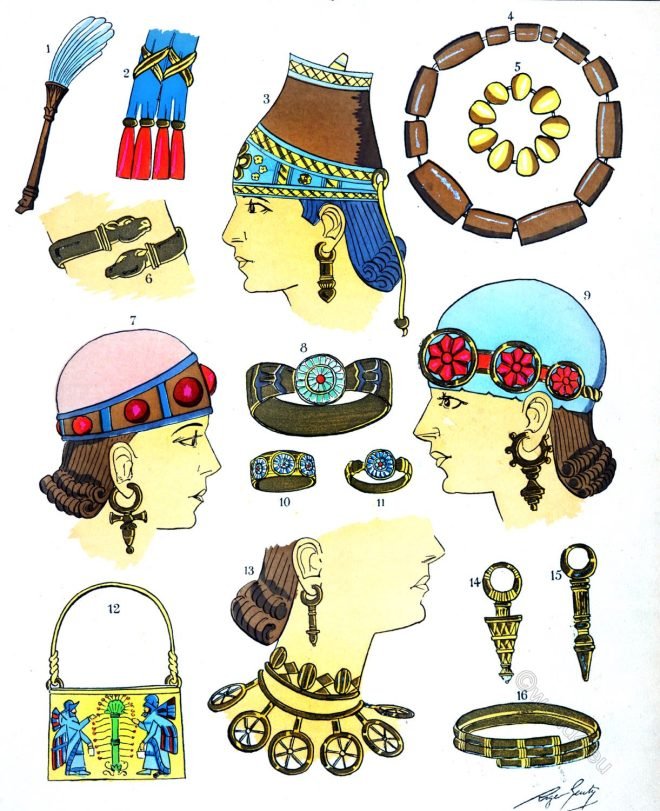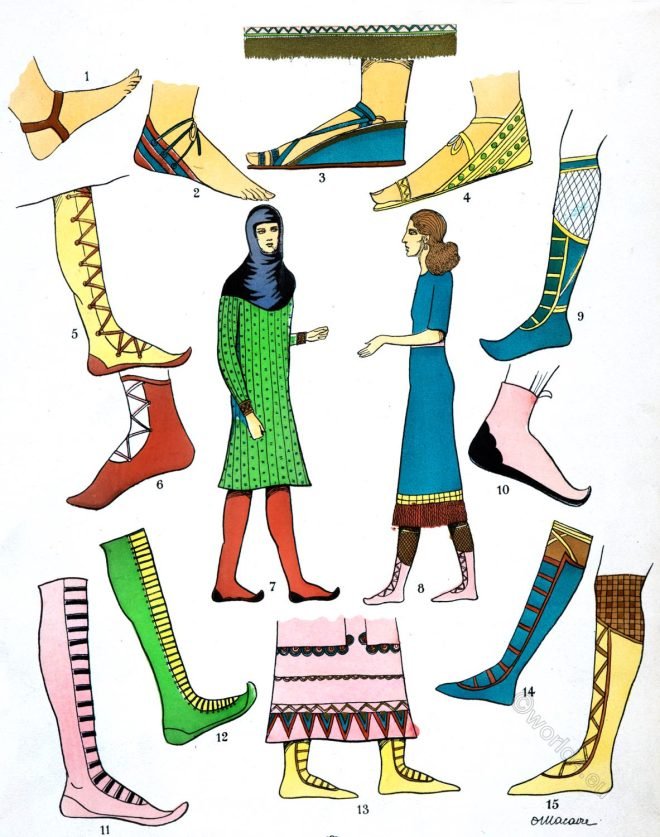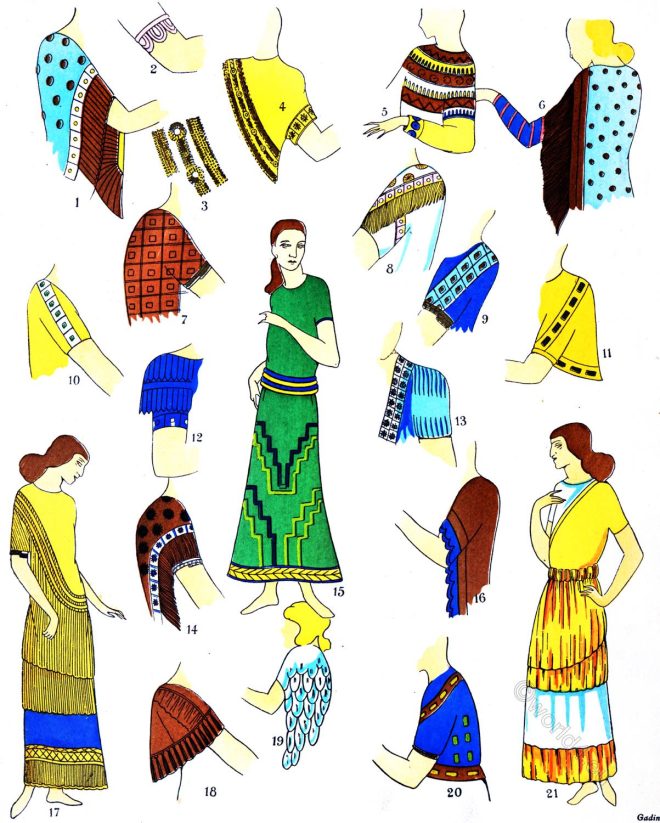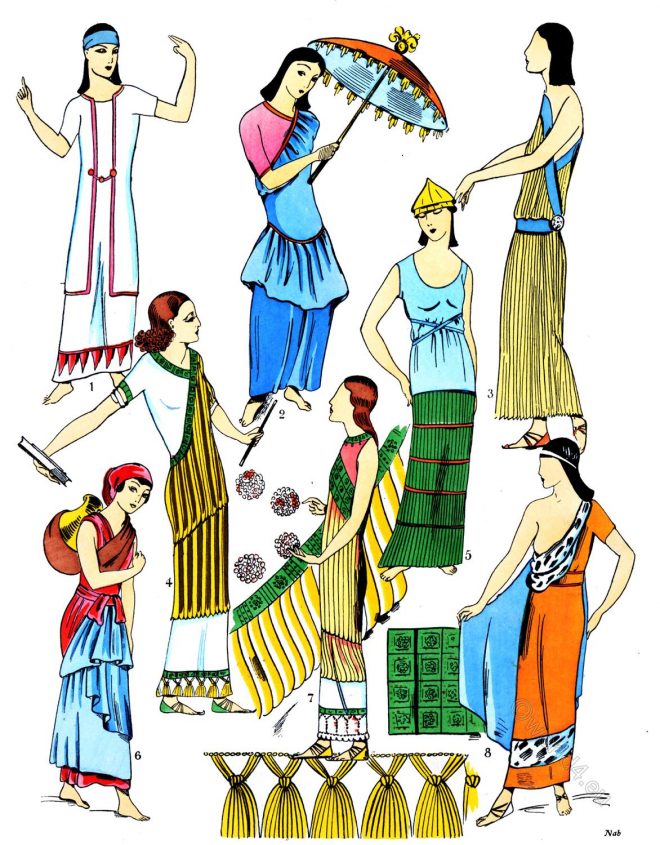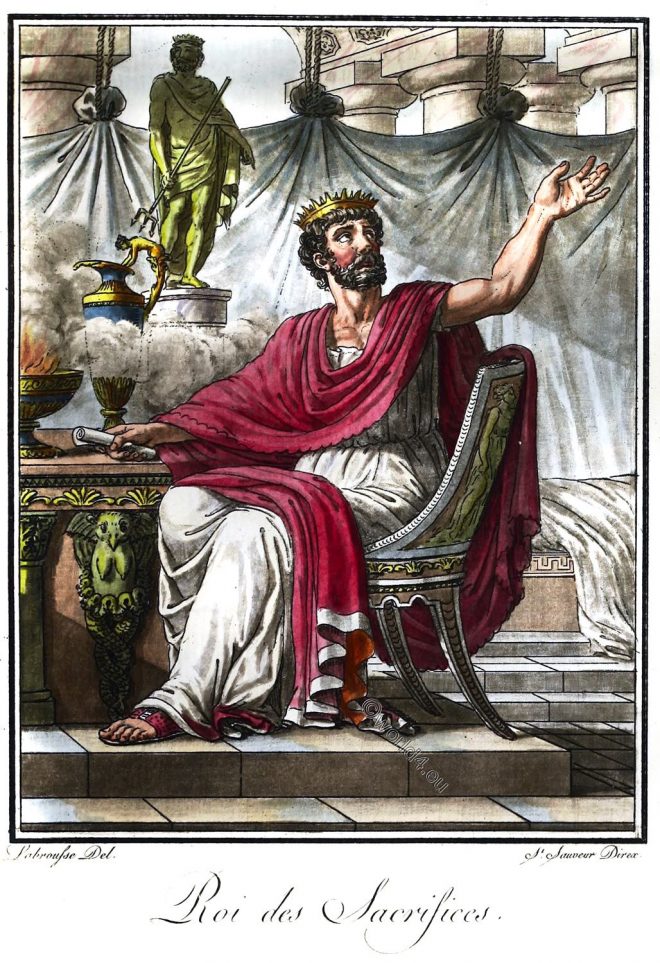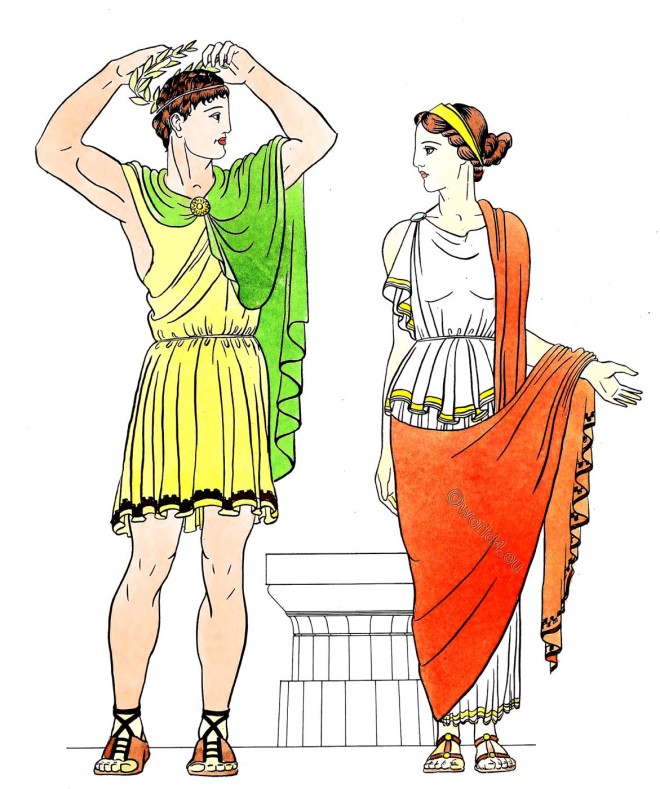The History of the Feminine Costume of the World. The Luxurious Assyrian Costumes.
Category: Ancient
Assyrian Footwear. Shoes, Sandals, Boots, Stockings.
The feet of the Assyrians were covered by sandals with uppers, embracing the heel, and leaving the instep and toes uncovered.
Textile design of the Assyrians. Materials, manufacture, colors, culture.
Mesopotamia. Materials, manufacture, colors, culture. Textile design of the Assyrians.
The different forms of sleeves on Assyrian clothing.
The sleeve shapes of Assyrian clothing. Assyrian woman’s costume. Costumes for both sexes.
Richly ornamented and embroidered Assyrian Skirts.
Assyrian dresses were richly ornamented, the opening of the dress and the bottom of the skirt bearing a double row of rosettes and long fringes
The Rex Sacrorum also known as Rex Sacrificulus.
The Rex Sacrorum (“king of sacrifices”), also known as Rex Sacrificulus was one of the highest Roman priests.
Greek doric. Costumes during the so-called Golden Age of Greece.
You will notice, from the Doric column in front of which they are standing, how closely the simple, open, unelaborated costume blends with the earlier Greek architecture.
Full view of the city of Oporto, from the Quay of Villa Nova.
Leading the spectator onward, and crossing to Villa Nova on the southern bank of the Douro, we come in full view of the city of Oporto
The Homeric costume of early Greeks. Dress of ancient Greece.
The costume worn by early Greeks was the simplest type of dress civilized man has ever fashioned.
Greek Art. Conventional Flora, Fretwork, and Meanders.
Greek Art. Examples of the flora of Magna Græcia. Painted antefixæ. Terra cotta ornaments. Paintings on vases. Fret-work or meanders.

